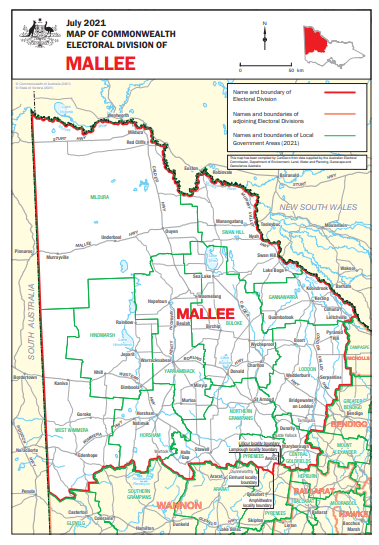|
|
|
|
| Adam Carr's Election Archive
|
Australian federal election, 2022
Division of Mallee, Victoria
Named for: Regional name (Indigenous word for the dwarf eucalypt
tree)
Northern Victoria: Horsham, Kerang, Mildura, Maryborough, Swan Hill
State seats: All of
Mildura, parts of
Bendigo East,
Lowan,
Murray Plains and
Ripon
Borders with:
Calare,
Calare,
Calare,
Calare,
Calare,
Local government areas: All of
Buloke,
Central Goldfields,
Gannawarra,
Hindmarsh,
Horsham,
Loddon,
Mildura,
Northern Grampians,
Swan Hill,
West Wimmera and
Yarriambiack, parts of
Pyrenees
Borders with:
Barker,
Bendigo,
Farrer,
Nicholls and
Wannon
Enrolment at 2019 election: 113,778
Enrolment at 2022 election: 120,339 (+05.8)
1999 republic referendum: No 71.2
2018 same-sex marriage survey: Yes 54.3
Sitting member: Dr Anne Webster (Nationals):
Elected 2019
2007 Nationals majority over Labor: 21.3%
2010 Nationals majority over Labor: 24.4%
2013 Nationals majority over Liberal: 6.2%
2016 Nationals majority over Labor: 21.3%
2019 Nationals majority over Labor: 16.2%
2022 notional Nationals majority over Labor: 15.7%
Nationals two-party vote 1983-2019
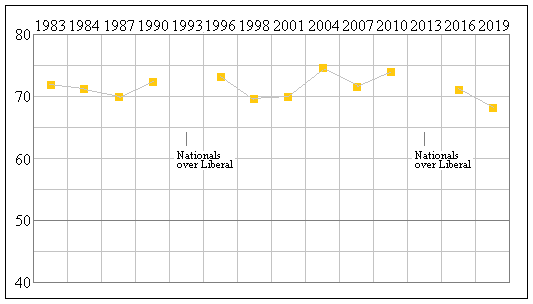
Status: Very safe Nationals
Best Nationals booths, two-party vote: Murrayville (87.8), Piangil (86.6), Underbool (84.1), Beulah (83.7),
Lake Charm (83.4)
Best Labor booths, two-party vote: Tarnagulla (56.1), Talbot (55.1), Carisbrook (53.8), Maryborough (53.6),
Halls Gap (52.4)
2019 results
Statistics and history
Candidates in ballot-paper order:
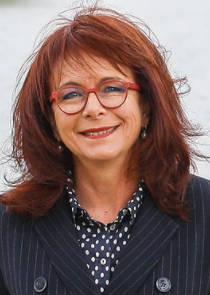 |
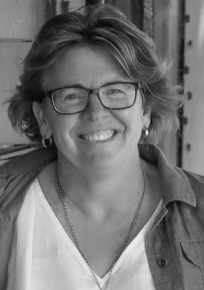 |
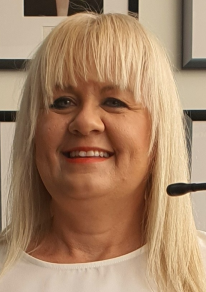 |
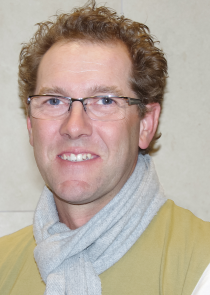 |
1. Dr Anne Webster
The Nationals |
2. Sophie Baldwin
Independent |
3. Claudia Haenel
Independent |
4. Chris Lahy
Citizens Party |
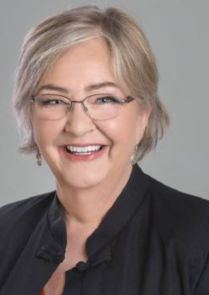 |
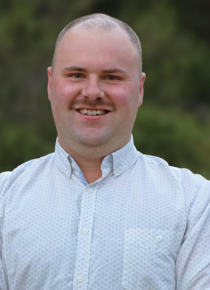 |
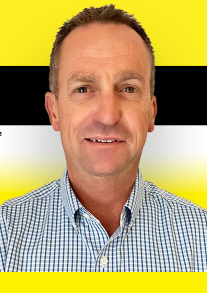 |
 |
5. Carole Hart
Australian Labor Party |
6. Sam McColl
Australian Greens |
7. Stuart King
United Australia Party |
8. Vanessa Atkinson
Pauline Hanson's One Nation |
Candidate websites:
Sophie Baldwin
Claudia Haenel
Stuart King
Chris Lahy
Sam McColl
Dr Anne Webster
Division of Mallee
Mallee was created in 1949, from the northern part of the Federation seat of
Wimmera. Wimmera was abolished in 1977 and
Mallee now has nearly identical borders to the old seat. It covers the north-western quarter of Victoria, including the
Murray Valley and the wheat country of the Wimmera. It has one of the highest proportions of its workforce engaged in
agriculture of any seat, and like all such seats it has a relatively low median family income level and a low proportion of
people born in non English speaking countries, although it has a surprisingly high proportion of people in professional
occupations.
Mallee has always been a safe seat for the Country Party and its successor the Nationals, although the Liberals nearly
pinched it in 1993 and again in 2013. It was the safest Coalition seat in Australia, but the inclusion of the Labor town of
Maryborough at the 2018 redistribution has slightly reduced the Nationals majority. Despite their security, until 2018 none of the
Country / Nationals members for Mallee had ever been promoted from the backbench.
Andrew Broad, who won Mallee in 2013, was apppointed an assistant minister in 2018. But soon after it was revealed that Broad (a
married man) had been using taxpayer-funded travel for sexual liaisons with a woman in Hong Kong he had contacted online. He
immediately resigned from the ministry and announced that he would not recontest Mallee.
Dr Anne Webster, Nationals MP for Mallee since 2019, has a PhD in social work and was a Mildura sociologist before
entering politics. She has also been a music teacher, a professional seamstress and an image consultant. Having survived a
Liberal challenge in 2019, she is now safe in this seat, which has been only slightly changed by the 2021 redistribution. The Labor
candidate is Carole Hart, whose occupation is not stated. The Greens candidate is Sam McColl, whose occupation is not stated.
Demographics:
Median weekly household income: $1,083 (Australia $1,438)
People over 65: 21.5% (Australia 15.8%)
Indigenous: 2.8% (Australia 2.8%)
Australian born: 81.6% (Australia 66.7%)
Non-English-speaking households: 8.0% (Australia 22.2%)
Catholics 20.6% (Australia 22.6%)
No religion 30.0% (Australia 29.6%)
University graduates: 10.1% (Australia 22.0%)
Professional and managerial employment: 33.7% (Australia 35.2%)
Employed in manufacturing and construction: 19.6% (Australia 22.9%)
Employed in agriculture: 22.6% (Australia 3.3%)
Paying a mortgage: 29.9% (Australia 34.5%)
Renting: 25.7% (Australia 30.9%)
Traditional families: 25.8% (Australia 32.8%)
Back to main page
|
|

